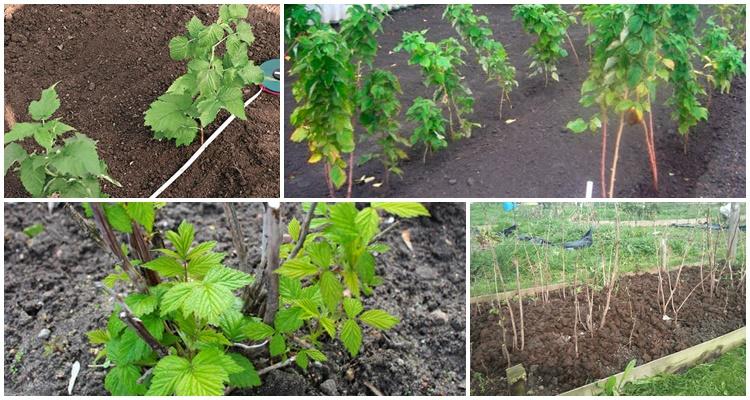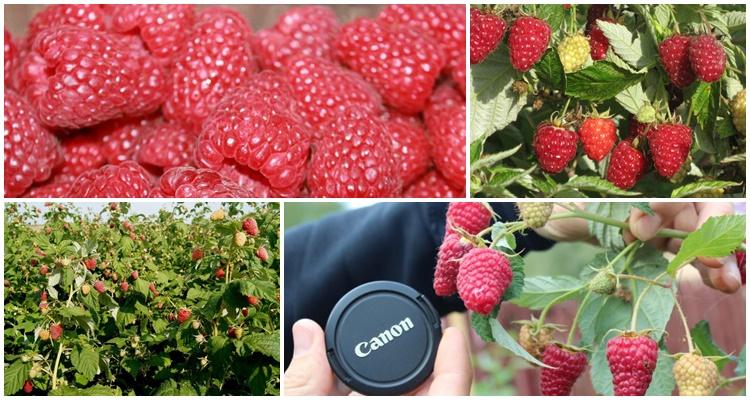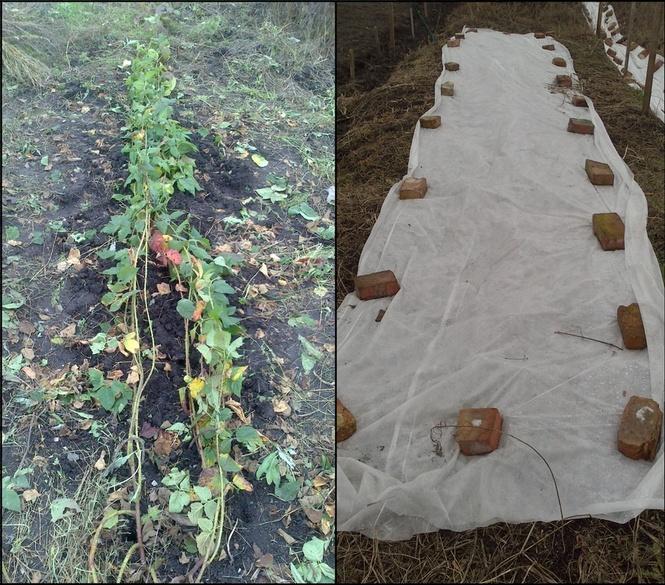Raspberries are a tasty and healthy berry with healing properties. This made her a favorite of gardeners, cooks and connoisseurs. Particularly attractive are the remontant raspberries of the Karamelka variety, the description of which emphasizes the attractive aspects of the plant, its taste, benefits, unpretentiousness, and the ability to obtain several harvests.
- History of selection of a remontant variety
- Description and characteristics of Caramel
- Advantages and disadvantages of raspberries
- Subtleties of cultivation
- Timing and selection of a suitable location
- Preparation of planting material
- Landing algorithm
- Care instructions
- Watering and loosening
- Feeding
- Garter to the trellis
- Trimming
- Wintering
- Diseases and pests
- Reproduction methods
- Harvesting and storage
History of selection of a remontant variety
Raspberries of the Karamelka variety were obtained (and registered) in 2016 by the Russian originator V. A. Shiblev. The remontant plant is suitable for cultivation throughout the Russian Federation, but the creator advises using it as an annual crop in places with long winters.
Description and characteristics of Caramel
The plant variety has a medium-sized, low bush, with dark red straight stems with a minimum of thorns, evenly scattered along the branches. Medium-sized leaves curl.
The berries weigh from 4 to 6 grams, and 8-12 grams are also found. They have a rich aroma and sweet taste. The entire stalk is separated. The pulp is dense, the berries tolerate transportation well. The average yield is 5 kilograms per bush.
Advantages and disadvantages of raspberries
Among the disadvantages of raspberries, one can highlight the high cost of planting material, which is caused by the small number of offspring and replacement shoots.
Subtleties of cultivation
To successfully grow Caramel raspberries, you must follow the recommendations of breeders.
Timing and selection of a suitable location
The plant is demanding on soil fertility, watering and sunlight intensity. Plant Caramel in open sunny places, on the south side of the site, away from trees and buildings, so that no shadow falls on the raspberries. The soil should be nutritious, loose, permeable to moisture.Raspberries of this variety require protection from the wind.
Preparation of planting material
Seedlings of remontant raspberries of the Karamelka variety must have a formed root system, strong stems and large buds. There should be no dry leaves on them. Before planting, plants are checked for diseases and pests - only completely healthy planting material can be planted.
Landing algorithm
Raspberries of the Caramel variety are planted in the spring, in March, before the start of sap flow and the growing season, or in the fall, in September, early October. Plants planted in the fall take root better and begin to bear fruit earlier.
From 3 to 5 bushes are planted per square meter at a distance of up to 70 centimeters from each other. Complex fertilizers are applied to the planting holes. The area for planting is first dug up and weeds are selected.
Care instructions
Raspberries of the Caramel variety are quite unpretentious, but they will grow and bear fruit well with careful regular care.
Watering and loosening
The bushes need abundant watering, but do not tolerate stagnant moisture. In rainy summer and autumn, Caramel raspberries do not need additional moisture, but the soil surface must be loosened regularly. This helps improve soil respiration and also eliminates weed seedlings to which the plant is sensitive.
In hot weather and drought, raspberries need to be watered. The amount of moisture depends on the density of the soil. On average, up to 2 buckets of water per bush are required.
Feeding
During the growing season, raspberries of the Caramel variety are fed 3 times:
- At the beginning of growth, after frosts have subsided. It is best to use organic fertilizer, such as chicken manure.From mineral means, nitrogen fertilizers are applied in the amount of 15 grams per square meter of planting.
- During flowering. During this period, potassium fertilizer (10 to 30 grams per 10 liters of water) and superphosphate (15-20 grams) are applied.
- After picking berries. Plants devote all their energy to fruiting, so they need support. To do this, use organic matter, preferably humus or compost, at least a bucket per bush. If the soil is dry, it needs to be thoroughly wetted.
Compliance with the feeding rules ensures a full harvest and excellent health of raspberries.
Garter to the trellis
Caramel has strong vertical stems, but with a large harvest or strong winds it will have to be tied up. This will help avoid breaking branches and preserve all the berries. Also, mounting on a trellis helps to ventilate plants and provide uniform lighting, which serves as partial protection against a number of diseases.
Trimming
In autumn, all fruit-bearing shoots are cut out from the ground, leaving areas no more than 3 centimeters high. All cut and fallen leaves must be removed, since pests and pathogens can overwinter on plant debris. In spring, only frozen, dried out and damaged branches are cut off.
Wintering
Raspberry Caramel is sensitive to frost and dry winds, so it is necessary to organize shelter and snow retention on the site. It is necessary to cover the plantings a week before the onset of persistent cold weather, otherwise the plants will dry out due to excess moisture.
Diseases and pests
Raspberries are susceptible to many diseases:
| The disease and its signs | Treatment options |
| Anthracnose | Cutting and burning damaged branches and leaves |
| Purple spot | ———— |
| White spot | Prevention: treatment before flowering 14 days with 1% Bordeaux mixture, “HOM” (40 grams per 10 liters of water) |
| Ulcerative spotting | ———— |
| Rust | 1 % Bordeaux mixture: 2 weeks before the formation of flowers, 14 days after flowering and after harvesting the fruits |
| Bacterial root cancer | Dipping the root system in a solution of copper sulfate for 5-10 minutes |
| Witch's broom | Can't be treated, plants are destroyed |
Plantings are damaged by the following raspberry pests:
- Mite - treated with Coromaite after removing the affected branches and leaves.
- Mole - “Fastak”, 3 milliliters per liter of water.
- Aphids - spraying with “Karate” or “Aktellik” before flowering and after fruiting.
- Raspberry beetle and stem gall midge - “Karate” in May and June, 4 milliliters per 10 liters of water.
- Stem fly - before flowering, spray with Actellik at the rate of 1 ampoule per 2 liters of water.
The massive spread of insects can be avoided by regular inspections of plantings and removal of damaged parts.
Reproduction methods
Raspberries of the Caramel variety are propagated by root suckers and rooted cuttings, layering, which are formed in the summer, bending young shoots and pinning them to the soil.
Harvesting and storage
You need to pick berries in the afternoon, when there are no dew drops on them. They ripen unevenly, so you need to choose ripe raspberries. At the bottom of the stems, Caramel may be buried by leaves, so the bush must be carefully inspected.
Fresh raspberries can be stored without refrigeration for up to 48 hours in a cool room; in specially created conditions, the shelf life can be extended to 5-7 days. Fruits should be sent for processing and freezing immediately when they contain the maximum amount of nutrients and vitamins that are preserved during shock freezing.
The Caramel variety is suitable for making preserves, jam, and compote. It is used to make a preparation for the winter - ground with sugar. This vitamin composition should be stored in the refrigerator.
























